On this page
Currently, my research focus is on multiple aspects of financing innovation. This exciting research field covers a broad range of important issues, related to such topics as venture capital (VC), entrepreneurial finance, and corporate innovation.
My research within this broad agenda includes: analyzing the valuation principles of VC-backed companies and the implications for fair values of the most valuable of these companies; exploring the ways venture capitalists make investment decisions and add value to their portfolio companies; examining the determinants of VC investment returns and the success of entrepreneurial companies; and the impact of the VC industry on the U.S. economy.
My research on financing innovation has been presented to academic community, multitude of practitioners, and featured and commented on in the media.
Some of the financing innovation topics my colleagues and I are actively studying include: how corporate venture capitalists make decisions and best (and worst) practices in corporate VC; valuation of early-stage VC-backed companies; contracting and corporate governance of VC-backed companies; contracts between VC funds and their investors and their impact on VC fund returns; optimizing the portfolio decisions of start-up investors; and the determinants of success and failure of start-ups and start-up investors. Stay tuned for release of new research results.
This recent work is based on my research of how firms and individuals make dynamic financing and investment decisions, and how these decisions play out in aggregate. Toni Whited and I wrote a review of dynamic corporate finance. Here are some other examples of my research in this broad area: capital structure of banks and the impact of capital regulation, optimal dynamic corporate financial policies; dynamic policies of abandoning innovative ventures; explaining various stylized facts such as the low-leverage, equity premium, and credit risk puzzles; interactions between corporate decisions and credit risk; the macroeconomic impact of financial decisions; market-based estimation of default costs; empirical modeling of dynamic capital structure. My co-authors and I also explore the long-term history of U.S. default rates, link them to macroeconomics and banking crises, as well as investigate the evolution of the global stock ownership.
Working Papers
A Unified Model of Distress Risk Puzzles
Co-authored with: Zhiyao Chen, Dirk Hackbarth
How Do Venture Capitalists Make Decisions?
Co-authored with: Paul A. Gompers, Will Gornall, Steven N. Kapla
An Empirical Target Zone Model of Dynamic Capital Structure
Co-authored with: Arthur Korteweg
Capital Structure and Systematic Risk
Co-authored with: Michael Schwert
Publications
Beyond Random Assignment: Credible Inference and Extrapolation in Dynamic Economies
Co-authored with: Christopher A. Hennessy
Journal of Finance, forthcoming
SSRN Version

Financing as a Supply Chain: The Capital Structure of Banks and Borrowers
Co-authored with: Will Gornall
Journal of Financial Economics, forthcoming
SSRN Version
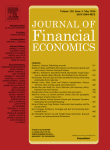
Macroeconomic Risk and Idiosyncratic Risk-Taking
Co-authored with: Zhiyao (Nickolas) Chen
Review of Financial Studies, forthcoming
SSRN version
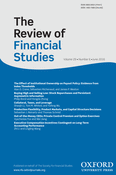
Firm Size and Capital Structure
Co-authored with: Alexander Kurshev
Quarterly Journal of Finance, 2015, 5, 3, 1-46
SSRN Version

Macroeconomic Effects of Corporate Default Crises: A Long-Term Perspective
Co-authored with: Kay Giesecke, Francis A. Longstaff, Stephen M. Schaefer
Journal of Financial Economics, 2014, 111, 297-310
SSRN version

Investment, Reputation, and the Temptation to Blend in with the Crowd
Co-authored with: Steven R. Grenadier, Andrey Malenko
Journal of Financial Economics, 2014, 111, 137-157
SSRN version

Government Policy and Ownership of Equity Securities
Co-authored with: Kristian Rydqvist, Joshua Spizman
Journal of Financial Economics, 2014, 111, 70-85
- SSRN version
- Finalist, 2014 TIAA-CREF Paul A. Samuelson Award
- Short version reprinted in Finance and Accounting Memos 2016, 3
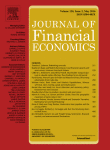
Dynamic Corporate Finance is Useful: A Comment on Welch
Co-authored with: Toni M. Whited
Critical Finance Review, 2013, 2, 173-191
SSRN version

The Mystery of Zero-Leverage Firms
Co-authored with: Baozhong Yang
Journal of Financial Economics, 2013, 109, 1-23
SSRN version, Lead article, Winner, the Emerald Citations of Excellence for 2016
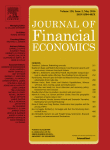
Dynamic Models and Structural Estimation in Corporate Finance
Co-authored with: Toni M. Whited
Foundations and Trends in Finance, 2012, 6, 1-163
SSRN version

Cash Holdings and Credit Risk
Co-authored with: Viral Acharya, Sergei Davydenko
Review of Financial Studies, 2012, 25, 2959-2999
SSRN version

A Market-Based Study of the Cost of Default
Co-authored with: Sergei Davydenko, Xiaofei Zhao
Review of Financial Studies, 2012, 25, 3573-3609
SSRN version
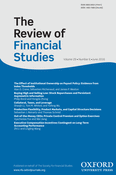
Corporate Bond Default Risk: A 150-Year Perspective
Co-authored with: Kay Giesecke, Francis A. Longstaff, Stephen M. Schaefer
Journal of Financial Economics, 2011, 102, 233-250
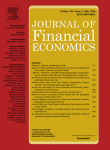
Temporary versus Permanent Shocks: Explaining Corporate Financial Policies
Co-authored with: Alexander S. Gorbenko
Review of Financial Studies, 2010, 23, 2591-2647
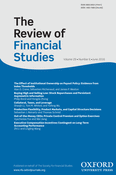
The Aggregate Dynamics of Capital Structure and Macroeconomic Risk
Co-authored with: Harjoat S. Bhamra, Lars-Alexander Kuehn
Review of Financial Studies, 2010b, 23, 12, 4187-4241
- SSRN version
- Lead article
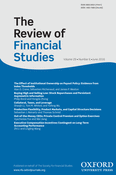
Long-Run Risks, Credit Markets, and Financial Structure
Co-authored with: Harjoat S. Bhamra, Lars-Alexander Kuehn
American Economic Review, Papers & Proceedings, 2010, 100, 2, 547-551

The Levered Equity Risk Premium and Credit Spreads: A Unified Framework
Co-authored with: Harjoat S. Bhamra, Lars-Alexander Kuehn
Review of Financial Studies, 2010a, 23, 2, 645-703
SSRN version
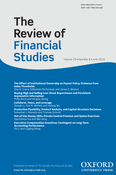
Repo Auctions and the Market for Liquidity
Co-authored with: Ulrich Bindseil, Kjell G. Nyborg
Journal of Money, Credit and Banking, 2009, 41, 7, 1391-1421
SSRN version

Structural Models of Credit Risk are Useful: Evidence from Hedge Ratios on Corporate Bonds
Co-authored with: Stephen Schaefer
Journal of Financial Economics, 2008, 90, 1-19
- SSRN version
- Lead article
- Third Prize, Q Conference, 2004
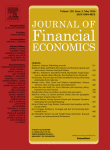
Strategic Behavior and Credit Spreads: An Empirical Investigation
Co-authored with: Sergei Davydenko
Journal of Finance, 2007, 62, 2633-2671
SSRN version
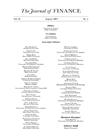
Do Tests of Capital Structure Theory Mean What They Say?
Co-authored with:
Journal of Finance, 2007, 62, 4, 1747-1787
- SSRN version
- First Paper Prize, Brattle Award, Journal of Finance, 2007
- The Trefftzs Award, Western Finance Association, 2004
- The Dimitris N. Chorafas Foundation Award, the best paper, 2004

Multiple Unit Auctions and Short Squeezes
Co-authored with: Kjell Nyborg
Review of Financial Studies, 2004, 17, 545-580
SSRN version

Collateral and Short Squeezing of Liquidity in Fixed Rate Tenders
Co-authored with: Kjell Nyborg
Journal of International Money and Finance, 2001, 20, 769-792
SSRN version

Media on My Research
Squaring Venture Capital Valuations with Reality – NBER, NYT, WSJ, Barrons, Bloomberg,
Forbes, Fortune, G&M, Wired, BC Business, BIV, BJ, Bloomberg TV, Business Insider,
El Economista, Les Echos, MSN, Stanford, TechVibes
How do Venture Capitalists Make Decisions – Chicago, Stanford, VentureBeat
Financing as a Supply Chain – Fortune
The Economic Impact of Venture Capital – National Review, Tech Republic
Research Community
Ph.D. Students
I have been privileged to work with and advise many talented Stanford Ph.D. students over the years. Most of them choose an academic career and continue their brilliant work as professors at business schools and universities across the nation. Here are the Ph.D. students I have been honored to work with:
2012-2017 Akitada Kasahara (Ph.D co-advisor, Stanford GSB), 1st job: Waseda University
2011-2016 Michael Schwert (Ph.D advisor, Stanford GSB), 1st job: Fisher School of Business, Ohio State University
2010-2015 Will Gornall (Ph.D advisor, Stanford GSB), 1st job: Sauder School of Business, University of British Columbia
2010-2015 Pavel Zryomov (Ph.D advisor, Stanford GSB), 1st job: The Wharton School, University of Pennsylvania
2008-2013 Will Cong (Ph.D co-advisor, Stanford GSB), 1st job: Booth School of Business, University of Chicago
2007-2010 Alexander Gorbenko (Ph.D advisor, Stanford GSB), 1st job: London Business School
2006-2011 Andrey Malenko (co-author, Stanford GSB), 1st job: MIT Sloan
2006-2009 Zhipeng Zhang (Ph.S. co-advisor, Stanford GSB), 1st job: Boston College
2005-2008 Baozhong Yang (Ph.D. co-advisor, Stanford GSB), 1st job: Georgia State University
2005-2007 Scott Joslin (Ph.D. reading committee, Stanford GSB), 1st job: MIT Sloan
2004-2006 Leandro Saita (Ph.D. reading committee, Stanford GSB), 1st job: Goldman Sachs
Co-Authors
I have been very fortunate to work with so many inspirational and knowledgeable co-authors. I list them here with my gratitude:
Viral Acharya, Stern School of Business, NYU
Harjoat S. Bhamra, Imperial College Business School
Ulrich Bindseil, European Central Bank
Zhiyao (Nicholas) Chen, CUHK Business School
Sergei Davydenko, Rotman School of Management, University of Toronto
Michael Ewens, California Institute of Technology
Kay Giesecke, Stanford University
Paul Gompers, Harvard Business School
Alexander S. Gorbenko, Marshall School of Business, University of Southern California
Will Gornall, Sauder School of Business, University of British Columbia
Steven R. Grenadier, Graduate School of Business, Stanford University
Christopher Hennessy, London Business School
Steve N. Kaplan, Booth School of Business, University of Chicago
Akitada Kasahara, Waseda University
Arthur Korteweg, Marshall School of Business, University of Southern California
Lars-Alexander Kuehn, Carnegie-Mellon University
Francis A. Longstaff, Anderson School of Management, UCLA
Andrey Malenko, Sloan School of Management, MIT
Kjell Nyborg, University of Zurich
Matthew Rhodes-Kropf, MIT Sloan
Kristian Rydqvist, Binghamton University
Stephen M. Schaefer, London Business School
Michael Schwert, Ohio State University
Joshua Spizman, Loyola Marymont University
Toni M. Whited, Ross School of Business, University of Michigan
Baozhong Yang, Georgia State University
Haoxiang Zhu, Sloan School of Management, MIT
Pavel Zryumov, University of Rochester